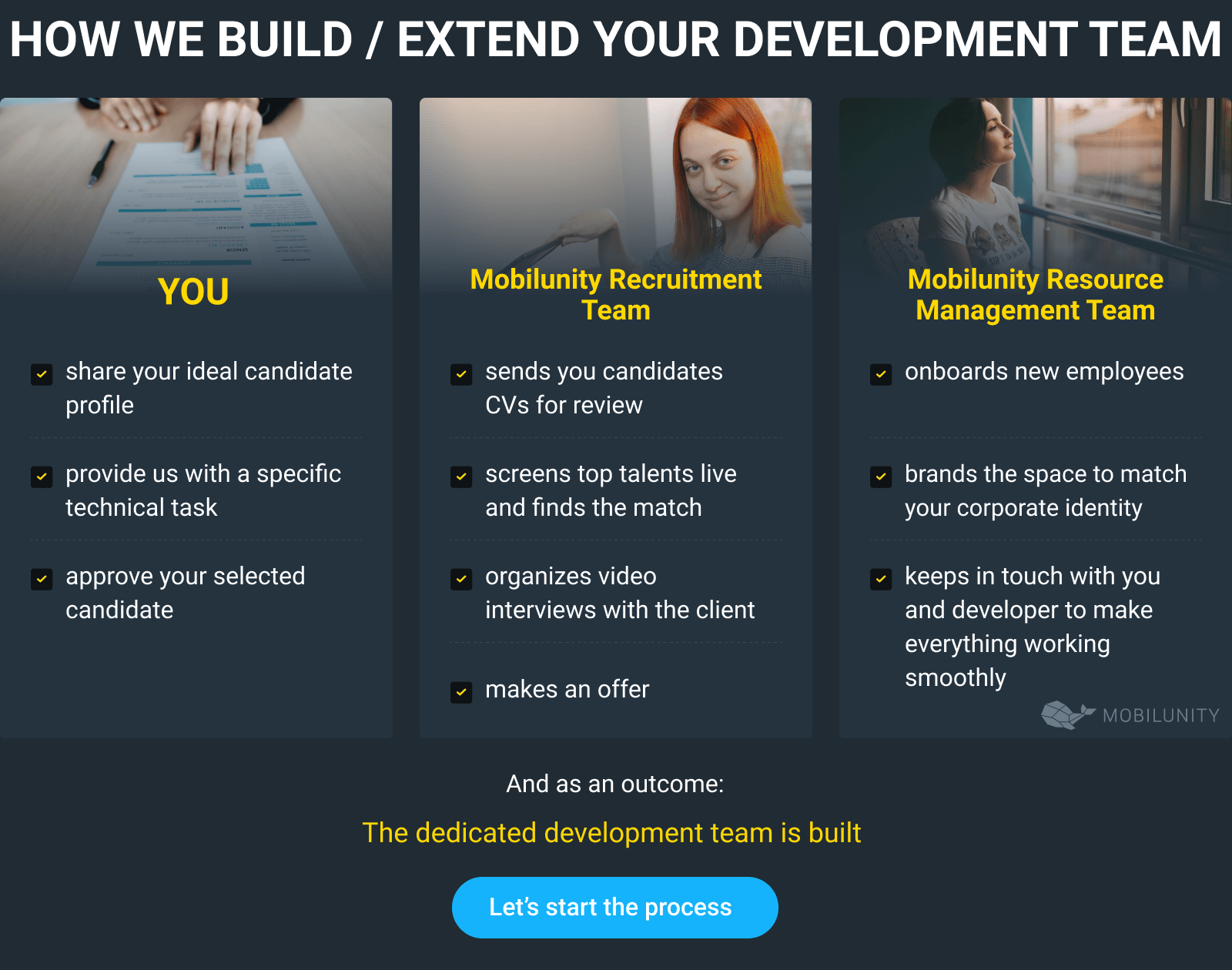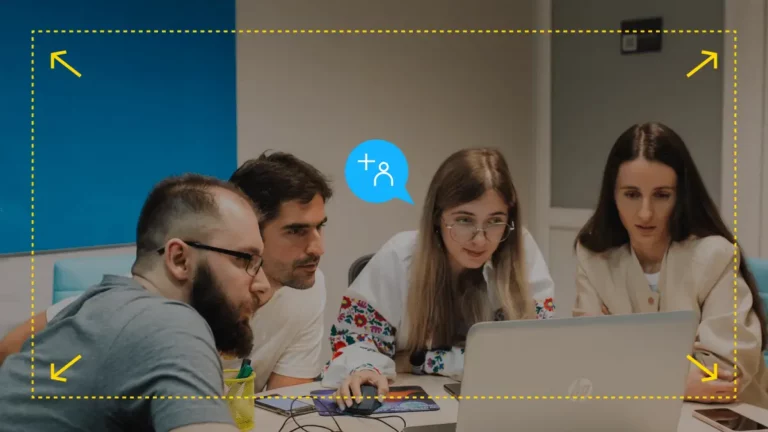25 Tips on Managing Remote Teams: Best Practices
Companies across the world are willing to hire remote development team either to operate exclusively with virtual teams or expanding the collocated staff, making software staff augmentation an appealing option for many. It is a shift that many companies adapted to gain diversity and global recognition. The tendency among young people around the world to work remotely continues growing: 42% of the respondents within the research, claimed that they spend approximately 60% of their time working on a remote basis. Seeing this tendency, many companies in the Information and Communication Technology sector have made a remote model a part of their business strategy. On a global scale, around 16% of companies have entirely virtual teams and admit that 24% of their employees with flexible hours feel more productive and happy. Quite often, entrepreneurs understand the importance and benefits of hiring remote teams, but remain hesitant to go for such a model since managing them might be difficult. Poor management, inability to find proper solutions and other aspects may lead to your on-site project failure. But what if it’s actually easier to maintain smooth working flow with remote development teams? We have collected a good number of tips on how to manage remote developers on your team and demonstrated examples of successful cases from companies having distributed teams around the world.

Distributed Teams Set-Up
When you finally decide to go for hiring a remote team, you need to define who you need, the number of developers, their personal characteristics, tech skills, language proficiency, and other issues that may influence your project. Your team is the driving force of your success, so make sure you plan accurately to build a strong professional team. Usually, the process of hiring a remote engineer is done through a vendor, who has a team of available remote outsource developers (outsourcing model, meaning you can’t choose particular team members) or builds the team from scratch according to your customized needs (outstaffing model, allowing you to pick every team member and have direct control of them). In both cases, your contribution to the process of setting up the team is crucial.
Tip 1: Compose a Detailed Profile Description
The provider of distributing teams should have a clear and accurate description of your project to search for your perfect match. Therefore, your initial step before jumping into hiring is to create a profile of your project: what tech stack will be used, how many people do you need, what experience, skills, language level they should possess, what’s the duration of the project, how do you see your collaboration and other matters.
Tip 2: Personal Traits Play a Role
Cultural barrier is the key risk that you may face while hiring remote teams. When the interview with the candidates is passed to you after the vendor, make sure you define these disparities, if they are considerable, and how they may influence your overall collaboration with the team. Creating a synergy will lessen interpersonal conflicts as well as make your team more efficient.
Tip 3: Conduct Personal Interviews
Visual contact with your potential employees help you feel them better, understand their motivation and intentions in terms of professional growth, and clarify if you have common views. Do not hesitate to ask them to imagine a troublesome situation and listen to what they say; this will help you understand how they react to issues and whether it can undermine your project flow. Moreover, a quite widespread and useful practice in recruitment is to ask the candidates to name their strengths and weaknesses to analyze their art of selling and see if they are ready to fight their gaps.
Tip 4: Give Test Tasks to Assess Tech Skills
Undoubtedly, testing the candidates is one of the most important steps that shapes your final decision. With this in mind, ask them to provide existing examples of their works or portfolios to be able to see the actual results of their experience. Moreover, give test assignments to assess a level of tech skills.
Tip 5: Role Distribution
While working in a team, it is highly important to set clear duties and responsibilities for each member. They should have milestones, goals, and KPIs accordingly, which will further be reflected in the overall project result. Moreover, guide your remote employees who they should contact in case any assistance is needed; this will save your time for resolving the ongoing problems during the project execution.
Did you know that a Swiss-based online insurance broker esurance managed to find a team of professionals from Ukraine in just 2 weeks? Due to clear requirements and candidates’ profiles, the vendor did not have issues in forming the dream team that client needed so much.

Collaboration
If you believe that collaboration is exclusively about communication, then it’s time to realize that collaboration is a much more complex aspect, which, if managed correctly, makes your work with remote developers easier.
Tip 1: Corporate Culture for All
Make sure your remote team is aware of your corporate values, business goals, mission. If the company negotiates about new partnerships, it would be useful to involve remote employees to introduce the team and share the details of a new partnership. Online team buildings are also possible with remote teams: organizing collective video calls to have informal conversations will considerably decrease the emotional distance between your staff members.
Tip 2: Meet Them Personally
The more you know each other, the more trust and loyalty you can establish. Do not neglect planning a business trip to spend time with your team and work side-by-side for several days\weeks. Besides working, a practical approach to get to know your team is to organize office pizza parties, sports events, outdoor activities, and other informal activities.
Tip 3: Give Feedback, Offer Promotion, Listen to Their Needs
Every person within the company wants to be a valuable member of your team: they want to be noticed, rewarded and heard. A good ingredient to your entrepreneurial soup would be reviewing the performance of your development team and rewarding them. Such an approach will show them your interest in supporting and encouraging and facilitate their process towards handling the workload.
Tip 4: Integrate Both In-house and Distributed Teams
Most likely, the development carried out by remote developers is a part of other crucial projects executed by in-house teams. Once in a while, consider conducting online meetups with on-site departments who would report on the stages of development, as it would bring more clarity and understanding for your remote developers on the overall project direction.
Tip 5: Establish Best-Working Communication
The flexibility of using a variety of communication tools help you maintain the process of the project on the set pace, constantly be in touch with your team, and resolve the issues in a timely manner. In communication, it is important to define which ways work best for you and your team to gain mutual agreement and satisfaction: from emailing to video conferencing. Did you know that GitLab, a web platform for DevOps lifecycle, hired a CTO (Chief Technical Officer) from Ukraine for a part-time occupation, which eventually turned out to be a full-time job for the employee? As the CTO claims, due to excellent collaboration with the company, after 2 years of working with them he understood that he is a complete member of their team.
Remote Teams: Communication
No need to indicate the importance of communication while collaborating with a remote software developer. A great number of personal conflicts and project downfalls can be avoided if the communication is properly established. Since your remote team works in isolation and can’t bump into you on the corridor for small talk, you need to encourage frequent communication to be a good leader for your distributed software development. Let’s see in detail what it can include.
Tip 1: Instant Messaging, Video Conferencing, Screen Sharing Tools
Managing a remote development team used to be a no easy task, however, digitalization made it easier due to a variety of web platforms. Take advantage of using modern technology as vital channels of communication; for instance, Slack or Google Hangouts can be used both for internal communication between team members as well as while contacting you; discussing the issues with coding can be visually available for the teams via TeamViewer; if you feel the necessity of visual contact, use Skype or Zoom.
Tip 2: Constant Feedback
It is a good practice to review your team’s performance once in a while, not only to see the pitfalls but also to reward them for succeeding in particular aspects. Giving feedback is also imperative as it assists you both in improving the project run in terms of eliminating problems once such appear.
Tip 3: Organize Business Trips
Being already highlighted, business trips to the country of your dedicated team is a great practice to establish trustworthy relationships with remote developers. During informal discussions, you get to know the employee’s self-consciousness, understand their needs and daily lives, thus, foster relationships that eventually would impact the overall performance.
Tip 4: Promote Their Interaction with the Existing Team
If you want to erase the boundary between remote and in-house teams, coordinate their synergy. With this in mind, bring on-site employees to video conferences to introduce the teams, conduct weekly meetings with both teams, encourage and monitor their interaction to see if they have no problems in finding solutions.
Tip 5: Personalize Your Communication
Since you come from different cultures, it is important to understand the values and concerns of your remote team developers. Your employees will show much more efficiency as they will feel valued and needed for the company. If you don’t want it to be an issue that might influence the project’s progress, talk to your employees, ask questions about their daily life, family, interests, hobbies.
Did you know that Ahrefs, a platform that is known as an SEO-tools provider, currently employs a good number of (10) remote employees in Ukraine? They are using a variety of communication tools to facilitate the process of collaboration for the sake of promoting the platform and make it easy-to-use for its users.
Watch why remote team members should meet in person & hire a dedicated developer for your team with Mobilunity
Contact usProgress Tracking
One of the common questions that companies ask before hiring remote teams is “How can I be sure of quality?”. While managing remote teams, best practices to control the quality of services, as well as the pace of their completion, would be applying a variety of systems and frameworks.
Tip 1: The CTO is a Secret Weapon
A Chief Technical Officer, not a new, yet not widely presented position in the companies. The CTO is a specialist who takes care of technical processes during your project execution. He/she directly communicates with distributed teams and controls the processes to make sure the project is running at a good pace. In fact, a person who holds this position also performs managerial activities, thus your team can be greatly organized according to your expectations. They can reveal the need of hiring more people of a particular specialization hence preventing the project execution from jeopardizing.
Tip 2: Use Task Tracking Systems
Most software development companies use Scrum frameworks to track the progress of tasks. Not only this methodology provides you an insight into your project management, but it also considerably saves your time as if you would document all tasks manually. Scrum not only allows you to track the time for task completion but also gives you flexibility in the development process and lets you react to changes in a speedy manner.
Tip 3: Daily Meetings and Sync-Ups
Here, everything depends on your preferences on how to keep everybody updated on the progress. To keep track of remote software engineering, schedule a short meeting at the beginning of each working day to discuss the plans for the day and express yourselves if necessary. Some remote teams also organize internal meetings, standups, or screen sharing during the day if something needs to be solved/clarified immediately.
Tip 4: Eliminate the Problems Promptly
Open the door to your office and let your employees know that they can always refer to you or the CTO if something goes wrong. Eradicating the issues once those occur fosters the progress of your project and strengthens your team. The more collaborative you are on this stage, the more authority you grow in your employee’s eyes.
Tip 5: Do Not Overuse Task Tracking Systems
No one likes to work under the pressure, so make sure you do not stand behind the back of your remote software developer. Do not overwhelm your employees with urgent tasks, constant emailing, messaging, update requests, and other inquiries – it will not foster the progress, instead, you will ruin the trust.
Did you know that dedicated development teams hired in Ukraine have been providing their exemplary IT services for world-known tech giants such as ABBYY, Samsung, Huawei, and Microsoft? These companies established their R&D centers in Ukraine since local software engineers demonstrated a high level of responsibility, dedication, and involvement in contributing to the team growth.
Retention
High staff turnover often occurs in companies with poor management and low commitment in retaining employees onboard. Based on the research conducted by LinkedIn, 41% of the respondents admitted that they will work for a company no more than 2 years, 37% claimed to be working 3+ years, and 22% are doubting about the period of time they will be employed. Generating a chain of approaches to retain employees is considered to be the best practice of working with remote app developers.
Tip 1: Recognize Their Contribution
Ensure your employees have constant feedback and a well-established rewarding system. Software developers require their achievements to be noticed and recognized. For most employees, recognition remains the driving motivation factor that highly influences the overall quality of services as well as efficiency.
Tip 2: Managing Remote Teams: Training
The world of technology is always changing, so it is your personal interest to keep your employees updated on the emerging tools. Providing paid courses (compensated by the company) not only will help your employees in upscaling their skills, but it also can be a component of your corporate culture – show your interest in helping your developers become better. Tech companies also offer mentoring programs, international conferences and seminars, cooperation with the specialists of other companies, and online webinars.
Tip 3: Bring Your Teams Together
Knowledge sharing is a significant method of passing skills from one department to another. There might be some techniques or approaches to coding in your home country which can be new to your remote team. With this in mind, consider such meetings at least once a year to boost your technological matters on a new level. Moreover, these join-ups with in-house teams give a great chance to celebrate common achievements for both staffs to realize that the efforts they make are real.
Tip 4: Organize Repetitive Corporate Events
New Year parties or birthday celebrations are common for in-house employees; however, you need to consider narrowing the distance during different events for your remote teams too. Corporate spirit should be present for your remote workers even while operating thousands of kilometers away.
Tip 5: Managing Remote Software Developers Personally
Finding personal approach to each employee within the team is crucial to separate their needs, goals, achievements. During meetings, whether online or real, try to be informal to show them that you value them not only for software development services but also just for being your colleague.
Did you know that one of the core pillars of Mobilunity’s philosophy is Retention? We have generated a working strategy of 3Rs (Relationships, Recruitment, Retention) to invest in the well-being of all our developers, satisfy their needs, and make sure they are working in a healthy office environment to commit to your success.
Managing Remote Software Developers is Easy as ABC
With all the variety of ways of managing remote employees, the most important is to define what works for you and your team. Before you actually hire remote development team, make sure to set up your team according to your project’s needs and requirements; hire people who will possess an immense level of responsibility and commitment as well as rich experience in the required tech skills. Bring communication with your team to the next level by using all available tech tools, regularly synchronize with them to discuss the evolving issues, integrate both in-house and remote employees to gain maximum involvement in the project progress.
In Mobilunity, we are striving to retain the employees by creating a healthy environment, making sure developers are heard, organizing office events, pizza parties, birthday celebrations, book reading classes. Our Resource Management team manifests training courses for the developers to upscale their skills and keep up with the latest trends in the Information and Communication Technology sector.













